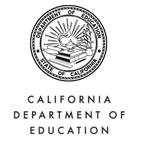Feb. 22, 2017 Letter Regarding Arts Education


Official Letter
Official Letter
Dear County and District Superintendents and Charter School Administrators:
FEDERAL FUNDING TO SUPPORT ARTS EDUCATION
This letter is an update to the California Department of Education's June 15, 2012, letter, clarifying the use of federal funding to support arts education under the federal Every Student Succeeds Act (ESSA). Local educational agencies (LEAs) have the flexibility within certain programs to use federal funds to support the arts. While Title I, Part A funds may not be used to fund programs whose primary objective is arts education, these funds may be used in limited circumstances to fund aspects of arts education if the strategies have been demonstrated to improve student academic achievement in English language arts (ELA) and/or mathematics, or to improve other factors that directly impact student achievement, such as family engagement, school climate and culture, and student engagement. To use Title I, Part A funds at a school site, the school should ensure that these resources are consistent with the strategies to meet the goals addressing state priorities articulated in a LEA's Local Control and Accountability Plan. If a school is required to have a Single Plan for Student Achievement (SPSA), then the School Site Council must develop, review, approve, and include these funds in the SPSA. Any LEA seeking to use funds for this purpose must comply with the requirements governing the development and approval of the SPSA.
Title I, Part A funding might be appropriately used to support arts education as a strategy to improve student achievement in ELA and/or mathematics at a Title I school if, after conducting a comprehensive needs assessment, the school has identified evidence-based strategies or programs incorporating arts instruction to improve student achievement. Implementation of the selected strategy or program should include student achievement objectives that are evidence-based, specific, measurable, attainable, and focused on increasing the academic achievement for all participating students in the school. At the end of each year, implementation of the strategy or program must be evaluated for effectiveness in terms of its impact on student achievement.
Additionally, other federal programs, including Title II, Part A can be used alone or in combination with Title I to support arts education in the context of professional development, strategic partnerships with nonprofit organizations, model program development, and the dissemination of best practices. Because of the complexity and varying rules of different federal programs, LEAs are encouraged to refer to their legal counsel regarding the specific uses of ESSA funds when designing programs.
As states around the country are building new accountability systems in compliance with the ESSA and the understanding of a well-rounded education, we want to continue to share with you opportunities and parameters for using federal funding to support school initiatives.
Superintendent Torlakson believes that all California’s children should receive a holistic education that includes activities that reinforce academics, develop skills, capture student interest, and support student engagement. Arts education can play an important role in this regard. We hope this letter will assist you in making important decisions about the use of federal dollars to support arts education.
If you have any questions regarding this subject, please contact Lori Marshall, Interim Director, Improvement and Accountability Division, by phone at 916-391-0926 or by e-mail at lmarshall@cde.ca.gov.
Sincerely,
/s/
Keric Ashley, Deputy Superintendent
District, School, and Innovation Branch
KA:lm
